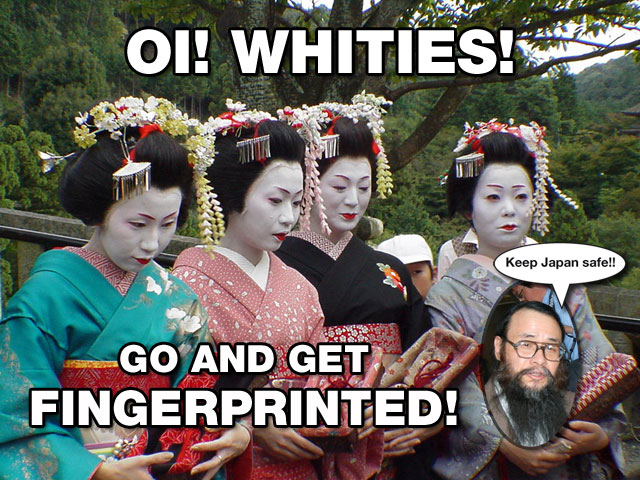mytest
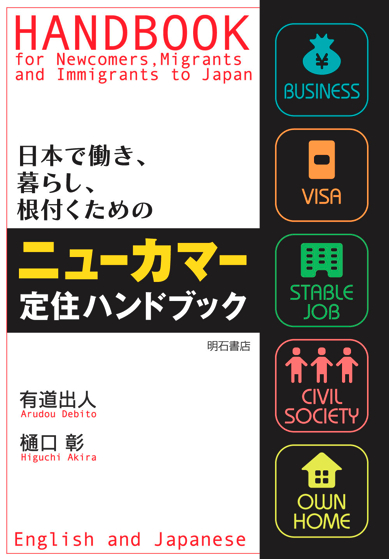


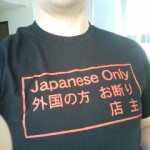


Hi Blog. Merry Christmas.
As another distraction (hey, even The Economist Newsmagazine has a special Christmas Issue every year with all manner of off-topic articles), here’s my Xmas present to readers: Ten things that I think Japan does best.
(Please feel free to comment if you think I’ve left anything out. My personal Ground Rules: Skip over things like cars and semiconductors and consumer electronics and steel, because they are obvious even to those who have never set foot in Japan, moreover are not very interesting to write about. Stick to things that require extensive experience and knowledge of Japan — that way we get a more interesting set of opinions. Hey, it’s the blogosphere.)
================================
TOP TEN THINGS JAPAN DOES BEST, OR WORLD-CLASS (in ascending order):
TEN) SEAFOOD. As you know, food in Japan is high quality just about everywhere (even school cafeterias offer more than just edible fare). But good food is not unique to Japan — there are many world cuisines (Chinese, Italian, Thai, Indian, French…). Where Japan particularly excels is in seafood — both in preparation and in training on how to eat it.
One of the things about being surrounded by coast in teeming waters and not much meat (animal husbandry here has only been around for a century or so) is that you HAVE to eat what’s on offer in the ocean. You make do. Fortunately, Japan doesn’t just “make do” — it has discovered how to eat just about anything from the sea — even algae — deliciously! Once you get used to it (which doesn’t take long), you start lobbing things in your gob without holding your nose. Sure, I still order fish and chips whenever I go into an Irish pub in Japan. But that’s a heavy-salt and malt-vinegar soul-food break from the seafood I’m eating on a near-daily basis anyway. Because it’s so good in Japan.
And Japanese, justifiably, eat more seafood than anyone else.
================================
NINE) PUBLIC TRANSPORTATION. Japan has its own problems with moving people around (to wit: overcrowding on subways, chikan molestation, and, er… that’s about all the downsides I can come up with). But even in Hokkaido, I can find a way, be it bus, train, and finally taxi if necessary, to get somewhere, including the boonies, if I have enough time. In other countries, I keep running into, “How are you going to get there if you don’t have a car?” situations. There’s often no other option there. Besides, even with the problems mentioned above, how many other cities the size of Tokyo can move this many people around on a daily basis (okay, London, and perhaps Mexico City)? Yet do it on such a clean (oops, that’s New York City out), reasonably comprehensible (oops, that’s Paris out) and cheap (oops, that’s Taipei out) basis? And extend it essentially across the country (okay, that’s Greater London and beyond out) so safely (oops, that’s India out)? Not many. I drive, but I’m increasingly realizing that I probably don’t need to (and I definitely wouldn’t if I lived in Tokyo). It’s a matter of time and convenience, and Japan has made a very good effort to make transit times approach and excel car ownership, probably as much as anywhere else in the world.
================================
EIGHT) ONOMATOPOEIA. Where to start on this one. No matter how many words I learn (and it helps if I have the kanji to get the root meaning), I am absolutely blind to the feeling of gitaigo and giseigo/giongo, Japanese onomatopoeic expressions. We all know guttari and gussuri and bon’yari and gakkari. But how the hell will I ever hear pori pori when I scratch the inside of my nose or rero rero when licking something, or gabiin when agape, or bosun when something, well, ejaculates? As inflexible as I find Japanese words, given how highly-contexualized the language seems to be (just hunting for that magic word to open the veto gate in any bureaucratic negotiation is a memory-taxing nightmare), there is incredible expressiveness in just a couple of repeated kana that I doubt I will ever master. My loss. Japanese is a language rich in expressiveness, and onomatopoeia is a huge part of it.
================================
SEVEN) PACKAGING. We hear about the Japanese department stores (Mitsukoshi first comes to mind) that essentially cocoon your purchase in more paper and plastic than is necessary (I too have to refuse half the plastics when just getting fast food and convenience store goods). That’s the downside. The upside is that when you really DO need cushioning for transportation, Japan really comes through.
Walk into any regular post office: You can buy a box and find tape and other packaging goods going for cheap or free. Go to a 100 yen shop and you’ll find spare newspapers lying about for you to package your just-purchased glass goods for the journey home. And then there’s Mitsukoshi…
Allow me to illustrate with another example: In September I came home from the US (having tried to send through the USPS some bulk items home in advance: talk about a rip-off; everything cost quite a bit and took its time getting here) and was glad to arrive in Narita (for a change!). Because the trucking delivery companies (Yamato, Pelican, etc) were just poised for me to fill one of their boxes (they had a selection) with goods I didn’t want to shlep around Japan during my September two-week book tour. In less than 30 minutes, Yamato had helped me pack, bubble wrap, and send off for a very reasonable price a bunch of sundries back north. If you don’t know how to pack, leave it to the experts. Over here, it’s part of the service. Because if it’s not boxed properly, it’s not presentable.
================================
SIX) CALLIGRAPHY GOODS. Here’s something I bet many haven’t considered: Germany and Japan are two otaku countries that are just plain nuts about how to write things with style. I’m used to crappy American Bic ballpoint pens that seize up in the same groove (and inexplicably ONLY in that groove, no matter how many times you go back and rewrite) or just decide to quit mid-cartridge. Plus I’m not used to fountain pens (I clench the pen too far down the neck and get ink on my hands), and I cannot see the use of spending a few dozen dollars or so (or even much more — there seems to be a Rolex league for pens out there) for something I might leave in a pocket or on a table somewhere or lend to somebody, whatever.
The attitude is diametric in Japan, where I have friends who specifically prowl stationery stores just to find a particular model (with special buttons to advance the pencil lead, or twirl cartridges that give you up to six different colors or pen/pencil combinations, or ink that comes out in multicolors like Aquafresh toothpaste) that they’ve seen advertised in some stationery magazine (yes, magazines devoted to bunbougu!). Poohie to those who think pens should be disposable. I too find myself prowling my students during writing assignments to see what they’re twirling (rather gracefully) while thinking. You’re just not going to get this much attention to fine-point durable pens in many other countries, when you consider how precisely people have to write (what with the finesse of kanji), plus this rich a society with near-unbelievable attention to detail. Germany, perhaps. But definitely Japan.
================================
FIVE) GROUP PROJECTS AND ATO KATAZUKE. Sure, we hear the downside of how working in groups makes situations inflexible and slow. But the good news is that when things work here, they really work, especially when the division of labor becomes automatic when faced with a project. Two examples come to mind:
One is whenever I was involved in setting up speeches and getting politically active in my former hometown of Nanporo (three essays on this here, here, and here). We’d rent a room at the local kumin center for a speech or town meeting, and a couple of friends on their own volition would always up early to help set up chairs and tables. Then when the proceedings were done, just about everyone would lend a hand in putting everything back exactly as they had found it before going home. I’ve done presentations overseas and found this phenomenon less frequent, if not nonexistent. “Hey, we paid an entry fee — you take care of the chairs. That’s what we paid you for,” is more the attitude. Sucks.
But my favorite example is when I was cycling between Sapporo and Abashiri via Wakkanai (yes, look at the map, it’s quite a ways) a few years ago. Here I was, soaking away in Japan’s northernmost onsen (Doumu), having accomplished the marathon cycle to Wakkanai (the last 68 kms between Teshio and Wakkanai is dry, so pack your own water — and pray for a tailwind). Suddenly, all the other cyclists (all half my age) and I had struck up a conversation about all the trials we went through getting up here too. An hour later, they were asking me where I was staying, and I pointed to the grassy knoll over yonder that looked like public space where I had set up my tent. They asked if they could join me (who was I to refuse?) and within minutes we had a tent city, and a bunch of kids who were perfect strangers not an hour ago deciding who was to make the fire, who would make the hot water, who would go on a beer run, who would collect the money for bento. etc etc. I couldn’t stay awake for the full project (I have a strict regimen: in bed by 8PM, up by 5AM when cycling; I’m old.), but this is the magic of people who automatically slot into roles when groups form, especially when those people are determined to have fun.
================================
FOUR) PUBLIC TOILETS. One of the first things I miss about Japan whenever I go abroad are the public lavatories. Sure, they exist overseas; but they are frequently hard to find (I think shoppers overseas must have enormous bladders), and the free ones usually look like they’ve been been through Lebanon or Somalia. Japan, however, is uncanny at its ability to keep its toilets clean and unstinky. And free (take that, you French!). Sure, I hate it when I’m turtle-heading and can only find Japan’s squatter-types. But I also hate being trapped behind a door where chance entrants can see my trousers dangling around my ankles and peep through the cracks in the toilet-stall partition; I pucker. Besides, whenever I’m on the road for several weeks in Japan and need a time-out, I just head for the nearest handicapped toilet, steer in my Monolith suitcase, and camp for fifteen minutes. Ah, a room to myself; it’s like a love hotel for my tuckus. With the added bonus of:
================================
THREE) TOILET CULTURE IN GENERAL. The Western flush toilet has survived remarkably unchanged since the days of Thomas Crapper. Like musket innovations in the 1600s, it took the Japanese to innovate toilets to include washlets (a quantum leap for those who tend to swaddle toilet paper until the bog chokes), with those lovely heated seats (overseas the flash-frozen toilet seats, not a shower or a cup of coffee, shocked me awake every morning) and hand-wash spouts on top of the tank.
Hey, when you’re not ashamed of your poop (it’s fair-game dinner-table conversation in Japan’s Working Class), you get creative. Japan, remember, is the place that shamelessly produced female urinals (which I cannot imagine anyone using; this is a nation where women waste immense amounts of water flushing while peeing to cover up the noise of their discharge; so add another innovation: flush-sounding noisemakers in their stead. But I digress…)
Anyway, shut the door, enjoy complete privacy (except for the grunting person next door; Japanese quack scientists claim that Japanese have the most fibrous turds in the world, therefore the lavatory lobby argues we cannot import toilets from overseas; no comment). And if somebody knocks to see if it’s occupied, just knock back twice; no voice needed (which helps when I do dumps at my university near students I’ll be teaching in a few minutes). Just be thankful if you skipped those traumatic years in Japanese grade school, when crapping is associated with smelliness, and kids wind up constipated just because they don’t want to make a stink.
================================
TWO) SEXUALITY. Here’s where I’m going to get into trouble, but I’ll say it: Japan in terms of sexuality is surprisingly liberal. I’m not just talking about the love hotels (not sleazy or embarrassing, and privacy is at a high standard, notwithstanding the hidden cameras behind some mirrors). Nor am I just talking about the porn or near-porn (artists here love the female form and know how to depict it perfectly in line, see below) one sees on a daily basis. I’m talking about attitude. People keep sexual liaisons here quite quiet, as long as it’s not a matter of celebrity (which means it’s fair game, like just about anywhere in the world anyway).
Case in point: People don’t “take it upon themselves” to tell others “for their own good” that their boyfriend/girlfriend is sleeping with others (in fact, multiple partners here seem to be a national sport, especially when people are not married. Actually, I take that back…) Sex is a private thing, and the sore lack of sex education here notwithstanding (the learning curve here is pretty steep, and seems to inch younger every year), it’s between consenting people and only between them. Kubi o tsukomanai koto.
Sex is also something that people engage in, without requirement of marriage or love (whatever that means), or fear of birth control or abortion, etc. — all those things that force people into making irrational and life-changing decisions that they’ll regret later. In modern Japan, where average marriage ages just keep getting older, sex is just sex. As long as people are informed about possible outcomes (AIDS, STDs, etc) and precautions, I think that’s the attitude that one should have. And Japan has it, and provides safe, clean, and often informed outlets for it.
And if you think this is only a recent thing, compare the US with Japan in The United States vs. One Package of Japanese Pessaries [as in contraceptive diaphragms] (1936), where Japan could develop this form of contraception but the US couldn’t, due in part to the Comstock Act. Other countries have liberal attitudes too, of course (Scandinavia and Holland come to mind). But I’m here, and I see it. Like it or not (more for the NJ male of either sexual orientation, less the NJ female, admittedly), Japan a very sexy country.
================================
ONE) ANIME. I’ve long admired Japanimation and comic art. Even though I never went all that deep; I still subscribe to 2000 AD and JUDGE DREDD THE MEGAZINE (British comics, think equal-opportunity former DANDY and BEANO reader too), as I have since both comics started, the former back in 1977, where I picked up the inaugural copy of 2000 AD from a London newsagent at age 12. But there’s just no resisting Japan’s clean lines, its sense of space and forcefulness, and its storyboard style of storytelling.
I knew for a long time that Japan’s Manga were underrated and deserved more attention overseas. Nowadays, Manga and Anime seem to be one of Japan’s largest cultural exports (the words have even entered the English language), with knockoffs surfacing all over Cartoon Network (I’ll admit it: I’m a big fan of POWERPUFF GIRLS, SAMURAI JACK, and just about anything by Genndy Tartakovsky). Resistance is futile.
But one of the knock-on effects of a society so consumed by comic art is that the general standards for line and face in the Japanese public are very high. I come from a society where the standard deviation for drawing talent is very high: you either get Pat Oliphants or stick figures, excellence or hopelessness. In Japan, however, consider this example:
I once gave a final exam where I had drawn a room on the answer sheet, and to test their spacial vocabulary skills, I said, “Under the table, draw Doraemon.” There were about 100 students. But EVERY student, save two, drew a clearly-recognizable Doraemon, many complete with spinner and collar bell and philtrum and whiskers. Some drew him airborne bumping his head on the table. Others had him can-canning, or waving his wand. I was overjoyed. The creativity (okay, cookie-cutter standardization for you cynical readers) within a set style was common to 98% of the students. Try getting people overseas to draw a recognizable Charlie Brown, Snoopy, Mickey Mouse, even just Felix the Cat, and you’ll see how comparatively low and underpracticed drawing skills tend to be.
================================
…AND JUST ONE MORE:
ZERO) SILLY CUTE. Nobody quite combines silly and cute quite like Japan does. Yes, Alex Kerr lamented how the culture of cute was paving over genuine time-tested Japanese culture in his book LOST JAPAN (this is how bluenose Kyoto rubs off on people). But if you allow yourself not to get too curmudgeonly about it, there are lots of giggles and laughs to be had.
Where else are you going to get Marimokkori (they’re algae balls, for crissakes, with capes and endowments of a nonfinancial nature!)? Try resisting the Hello Kitty goods when she’s adopting regional clothes (love Pirika Kitty and the super-tacky Susukino Kitty) or dining habits. Lots more characters and amusing crap in Japan, just look around. And they’re even finding markets overseas.
The reverse isn’t as true. Disney notwithstanding (and even that has gotten ironic in recent decades to broaden its audience), the West just can’t do cute or silly without sarcasm seeping in. Even those who shoot for it: France’s Barbapappa just comes off as “easy to draw”, not cute. Finland’s oddly-shaped Moomin even has that evil-looking Myy character (Finland is just plain weird anyway). Even the BBC’s Teletubbies (which will give you a hernia if you argue their cuteness; they’re apparently good to watch while stoned) had a short shelf life. They would have lasted longer if they’d gotten a J-makeover and a firm J-market.
The way I see it: Camp is imbued with a sense of irony. Tacky and Kitsch both come off as cheap. And all eventually become tiresome. But Japan just keeps up the cute and silly and manages to (thanks to a lack of sarcasm here) remain unironic, with a straight face throughout. Hey, it’s cute, what’s not to like? As long as you keep the permutations coming, you never quite get sick of it. Because it’s tacky, kitschy, and campy all at the same time, but only we non-natives seem to realize it.
==========================
That’s the ten best. Merry Christmas, Debito.org readers. Arudou Debito in Sapporo
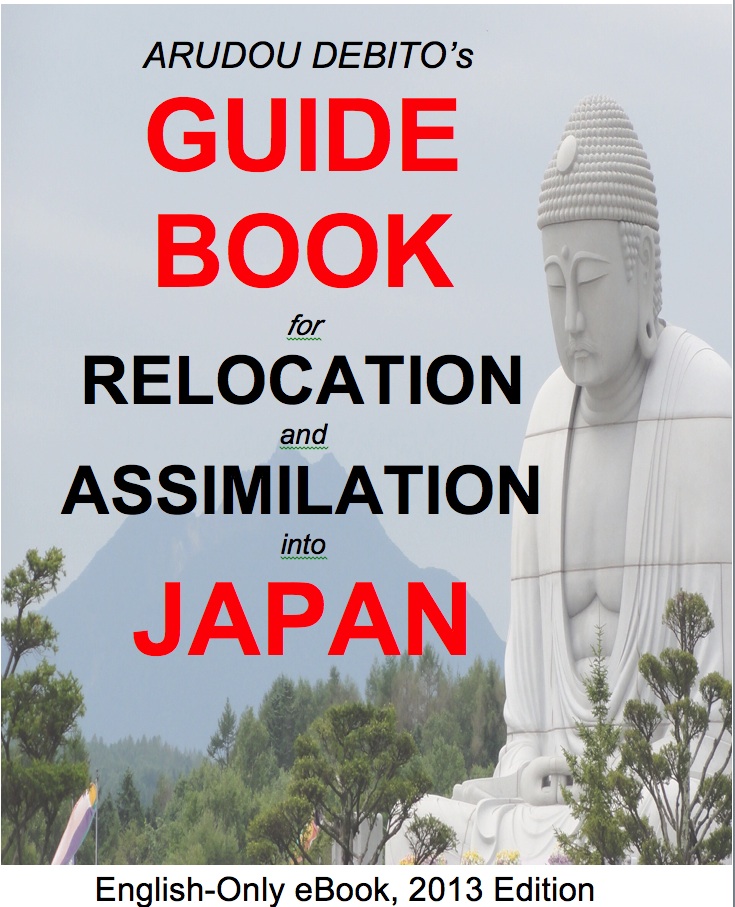
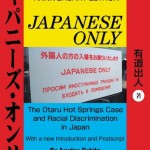
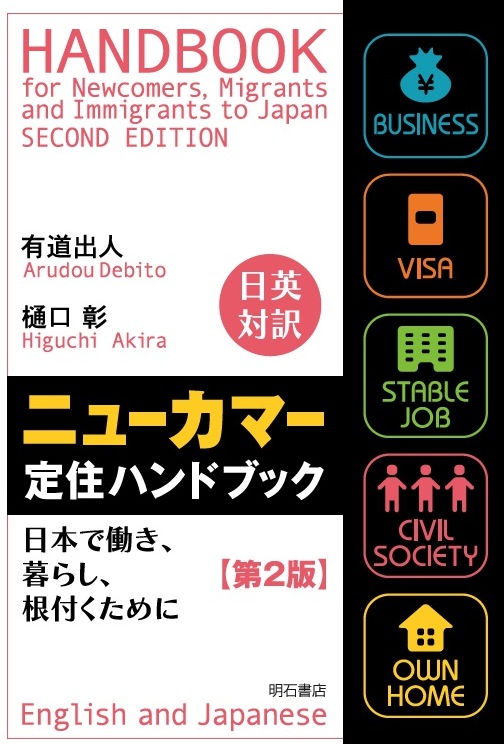


![]()






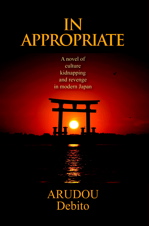


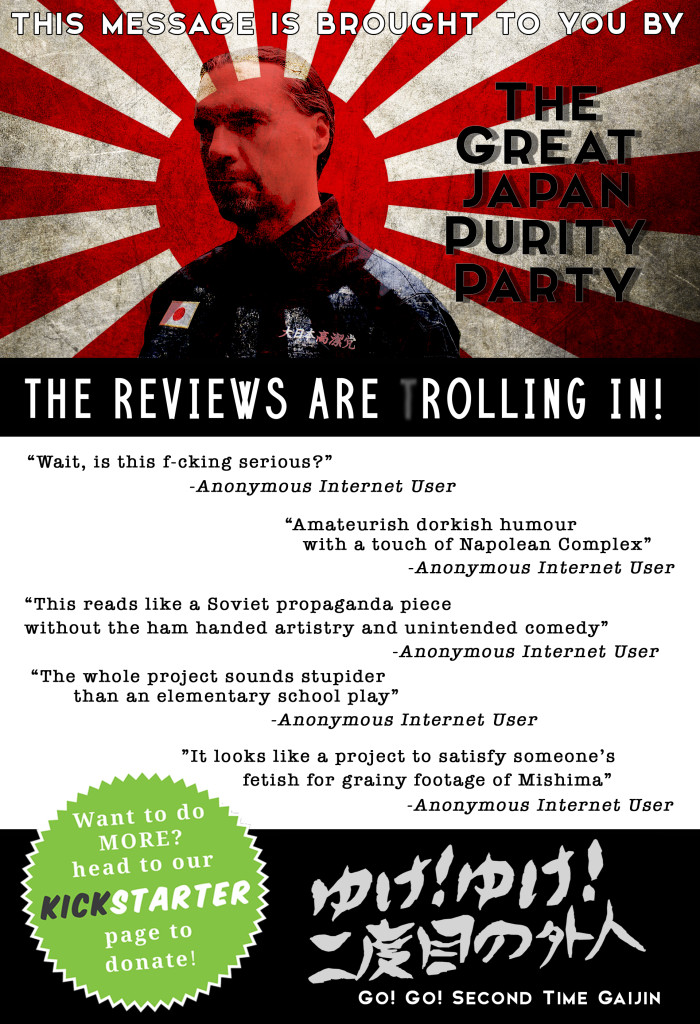
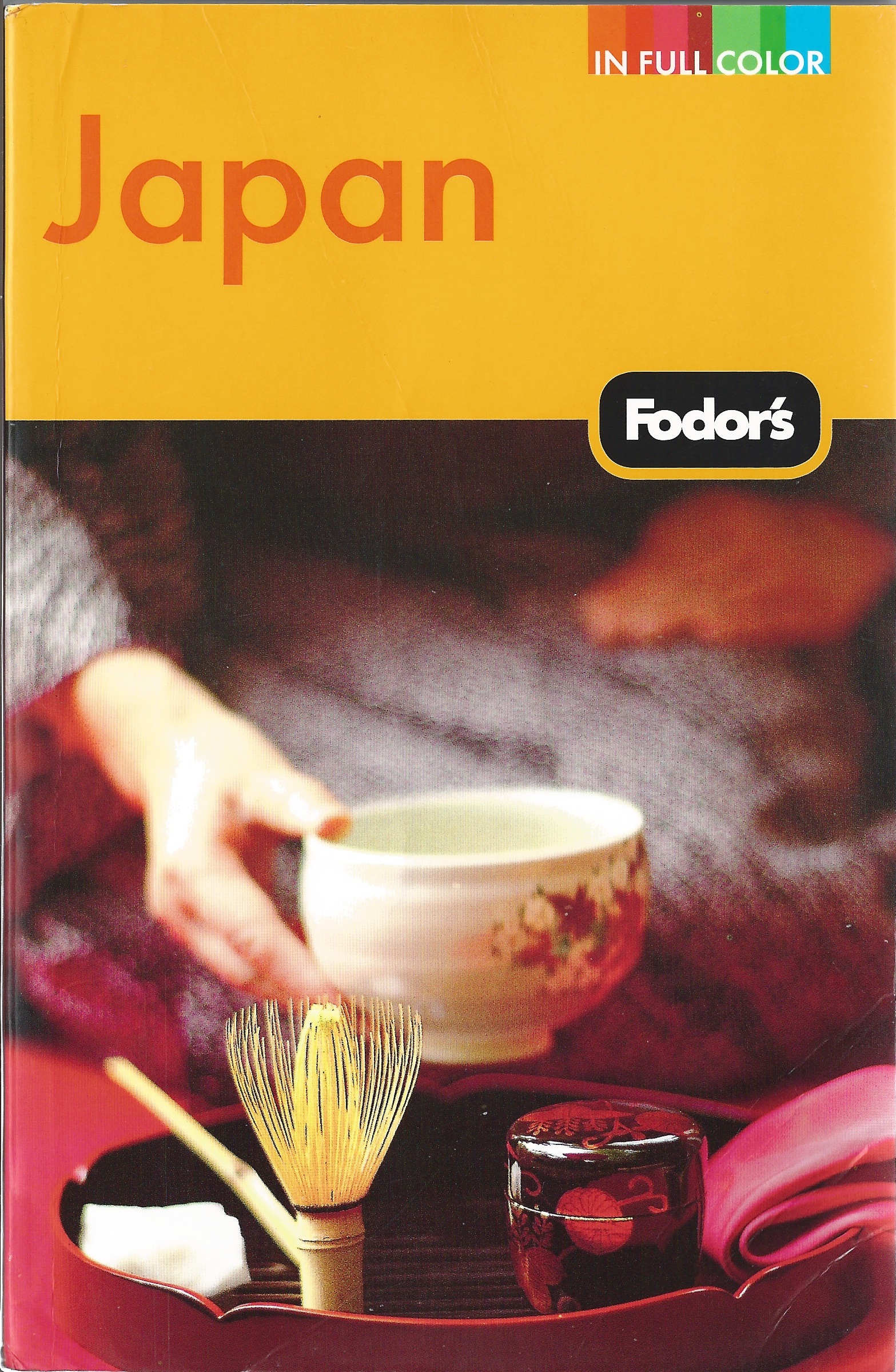
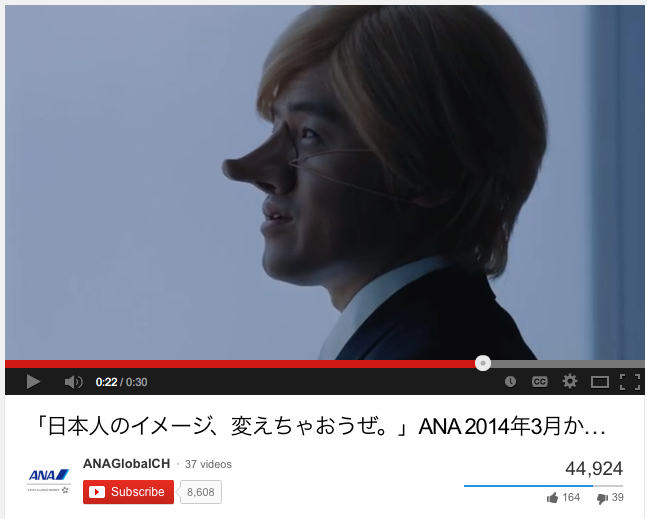
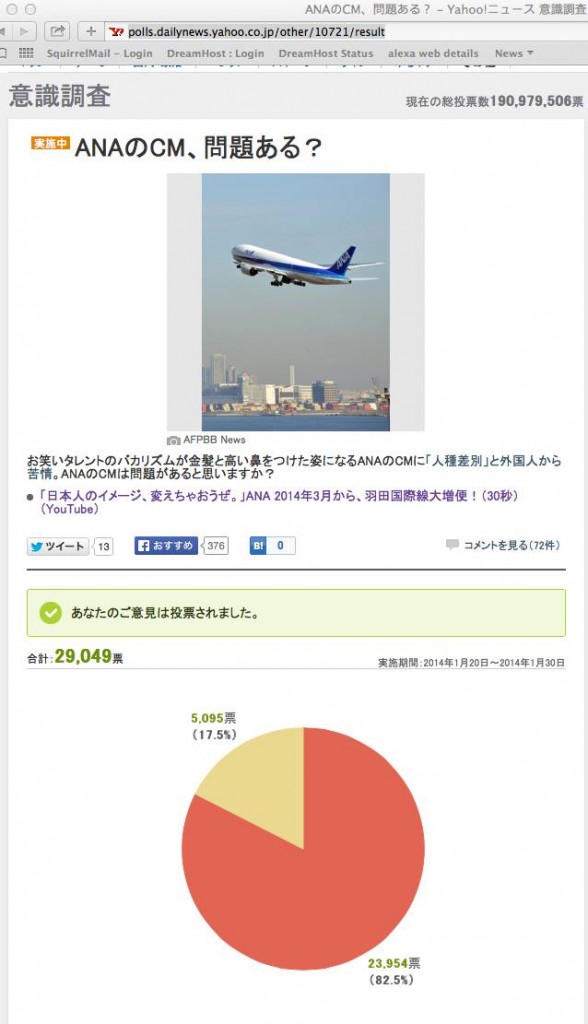


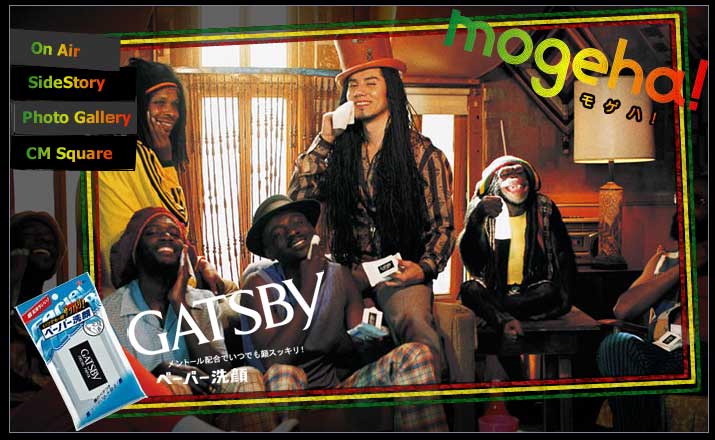




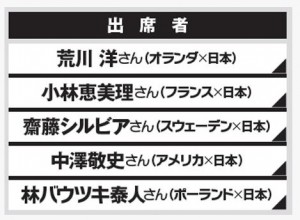










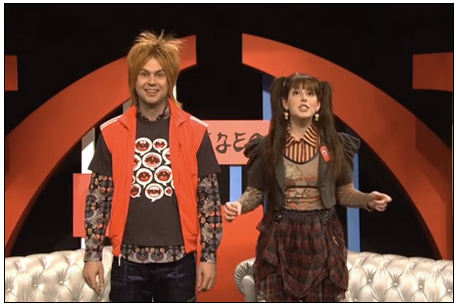




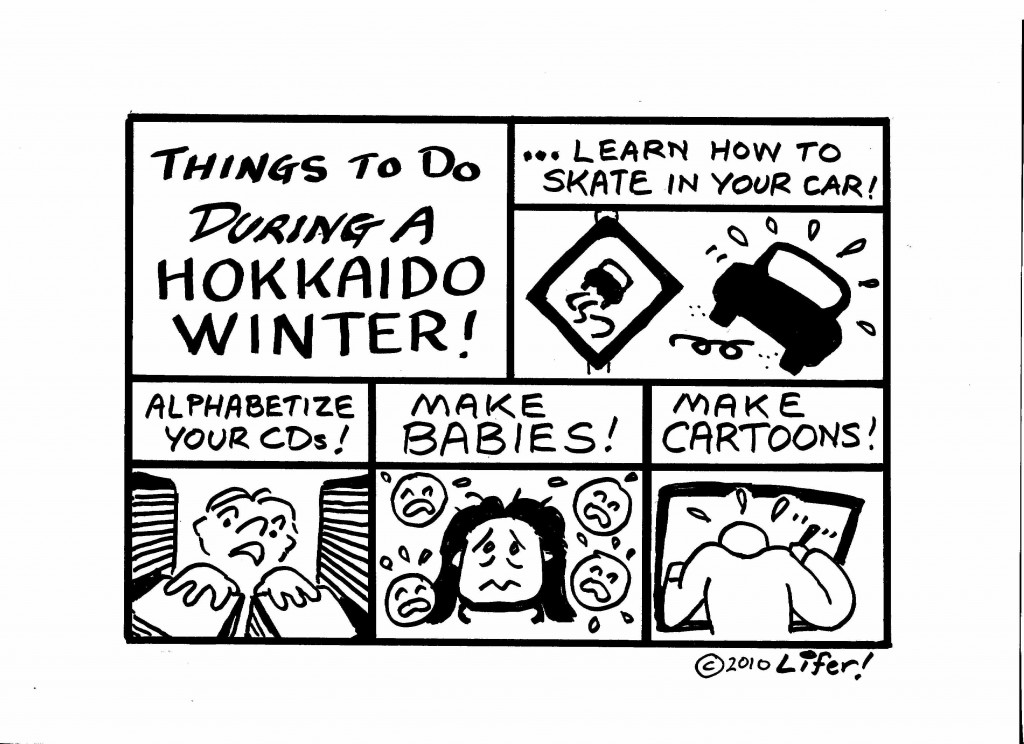
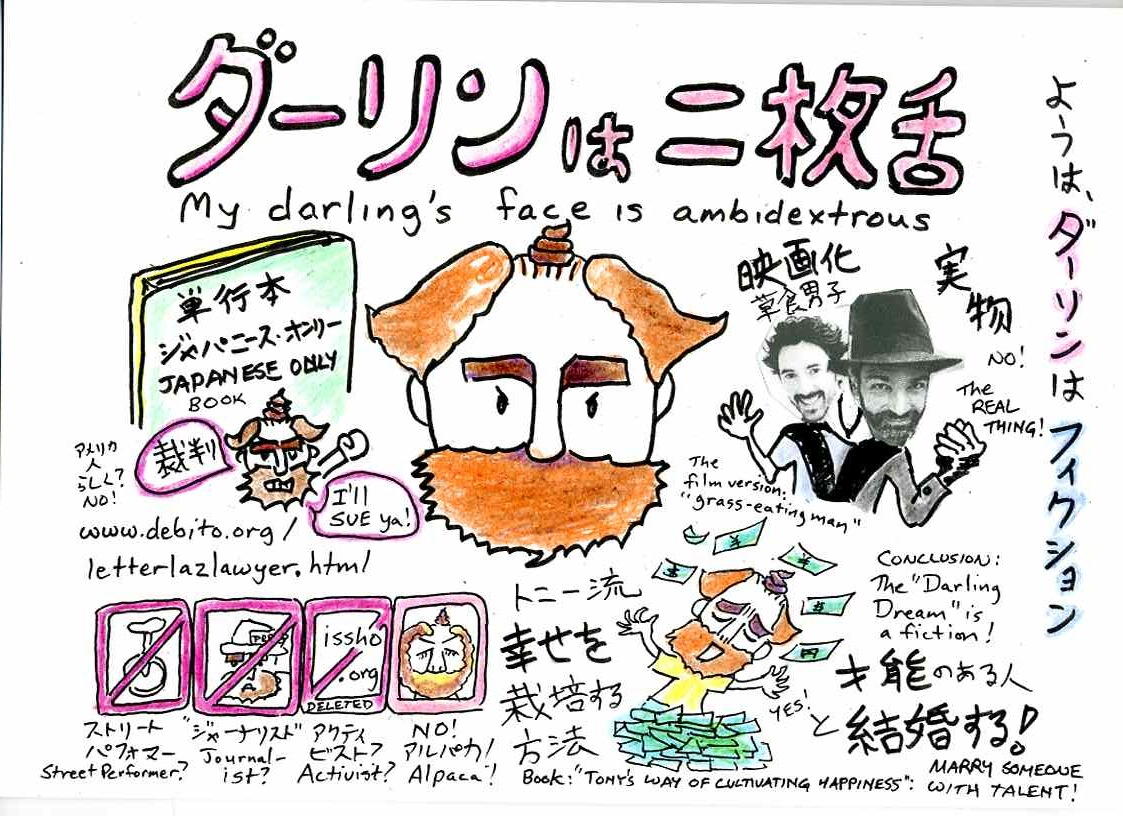
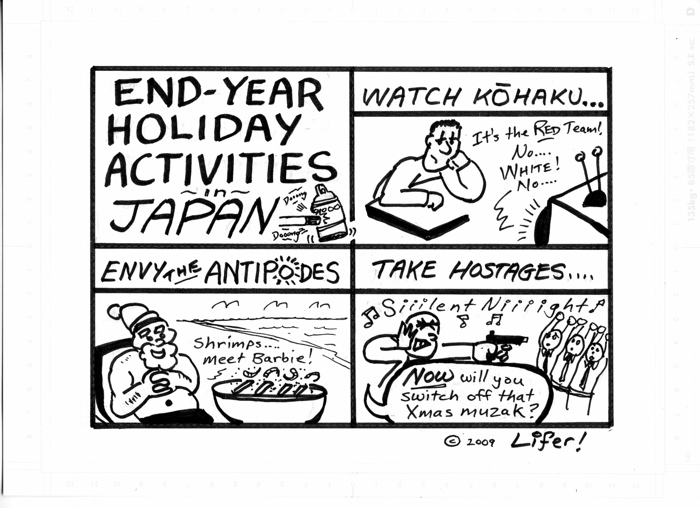
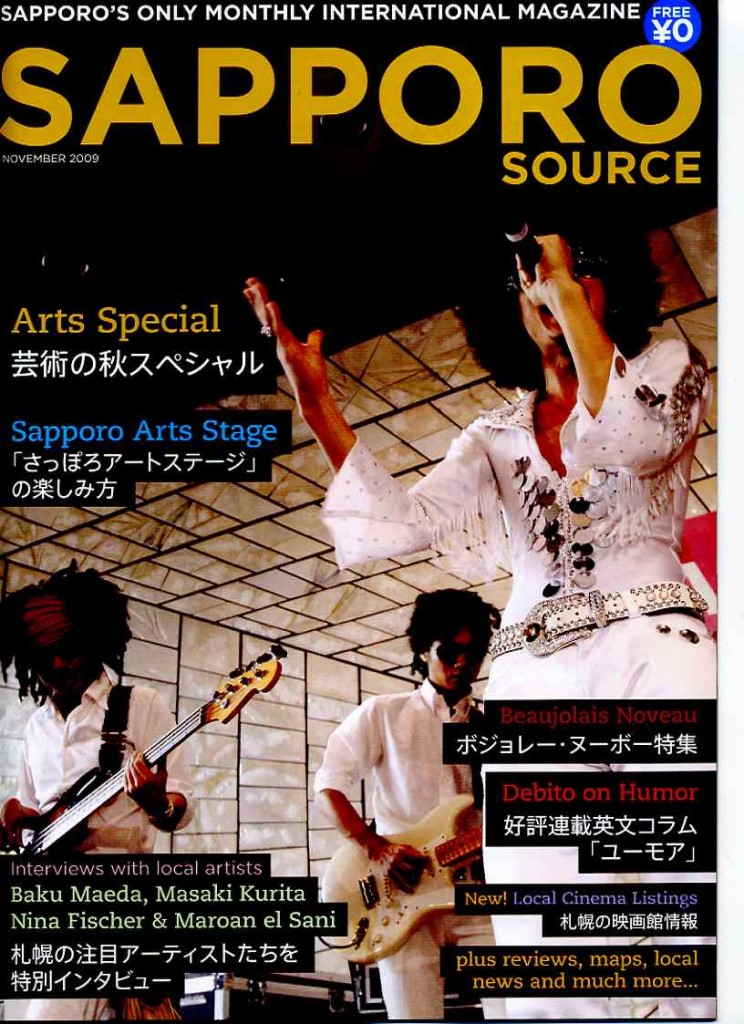
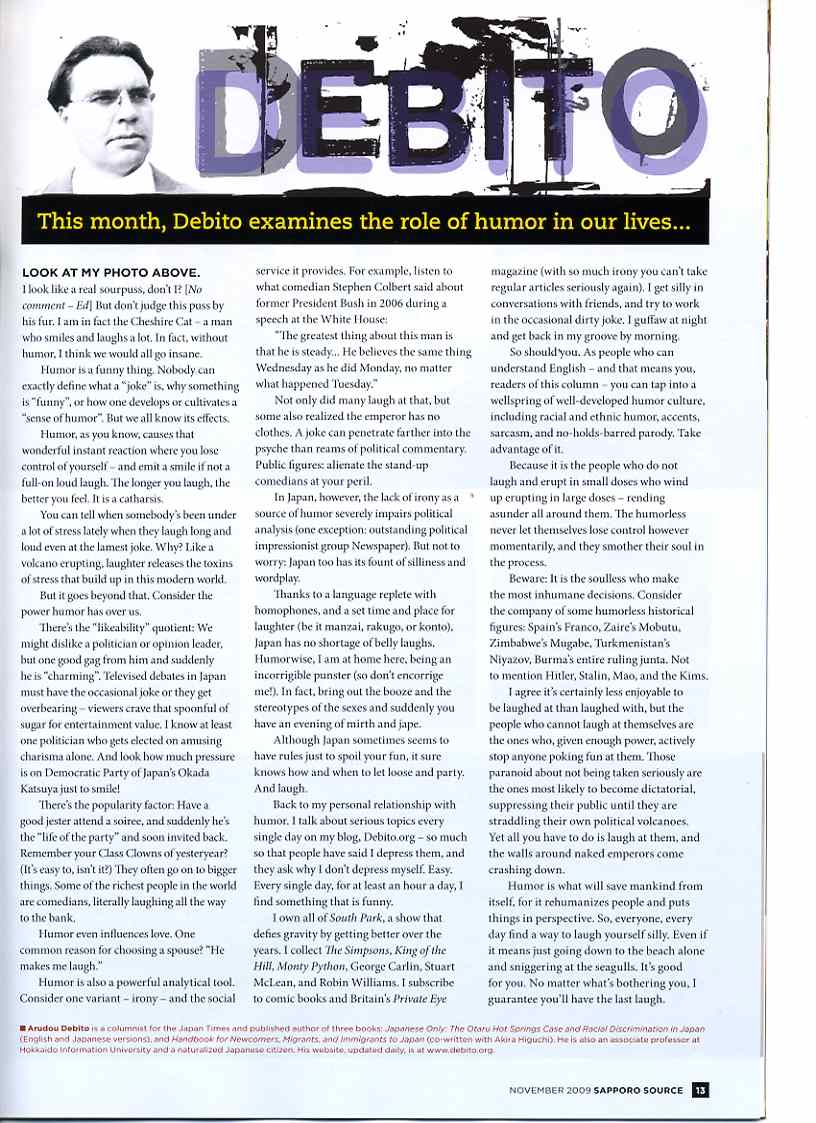
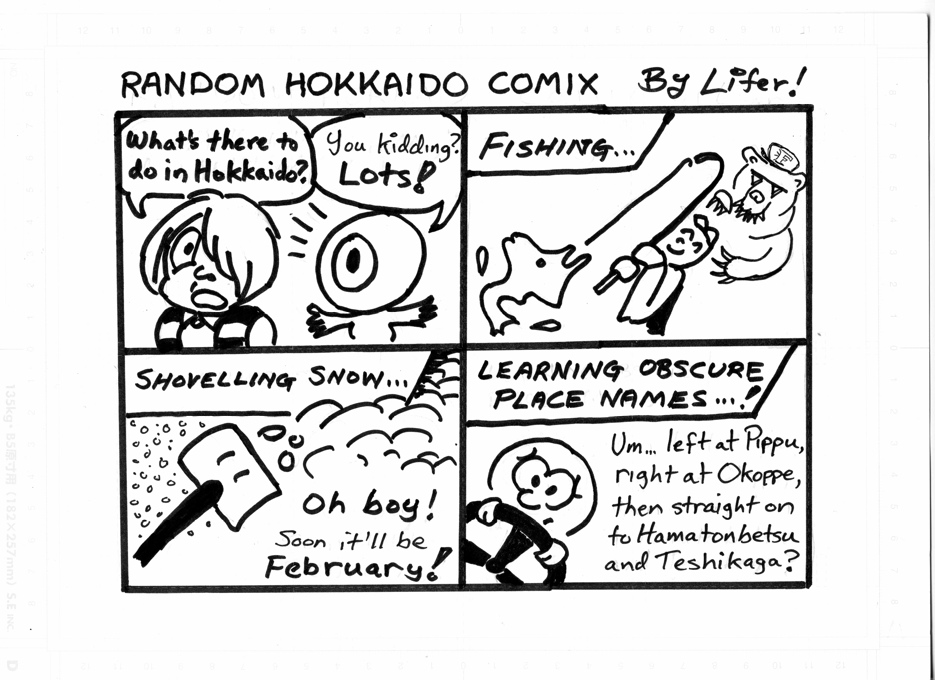
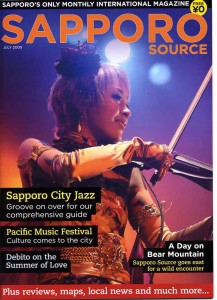
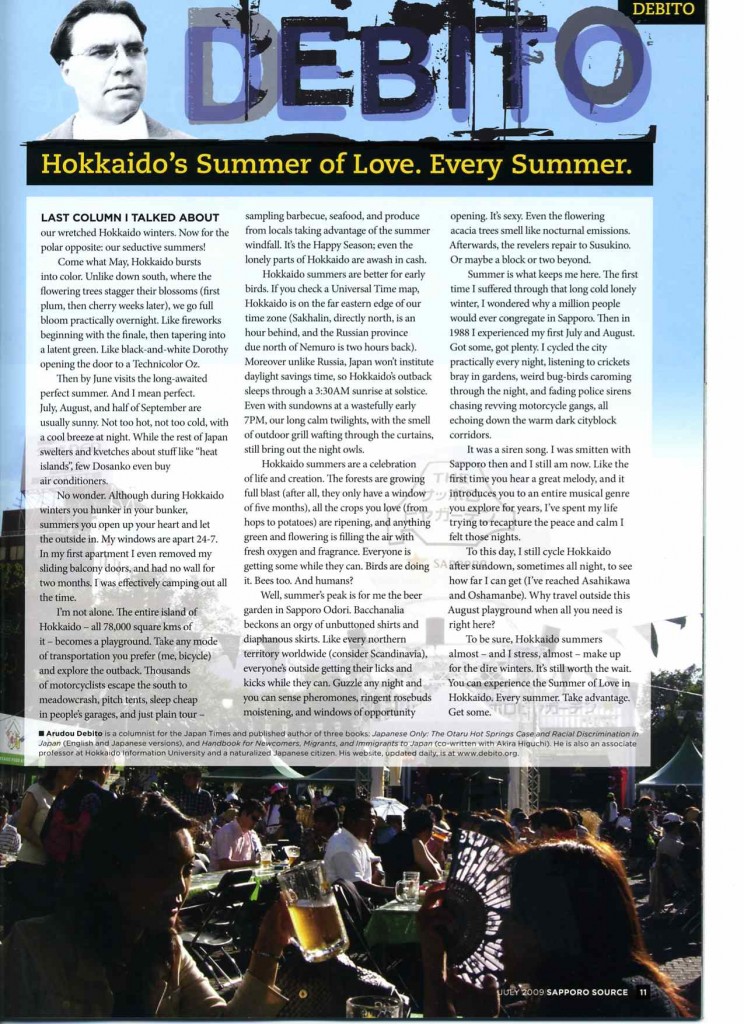
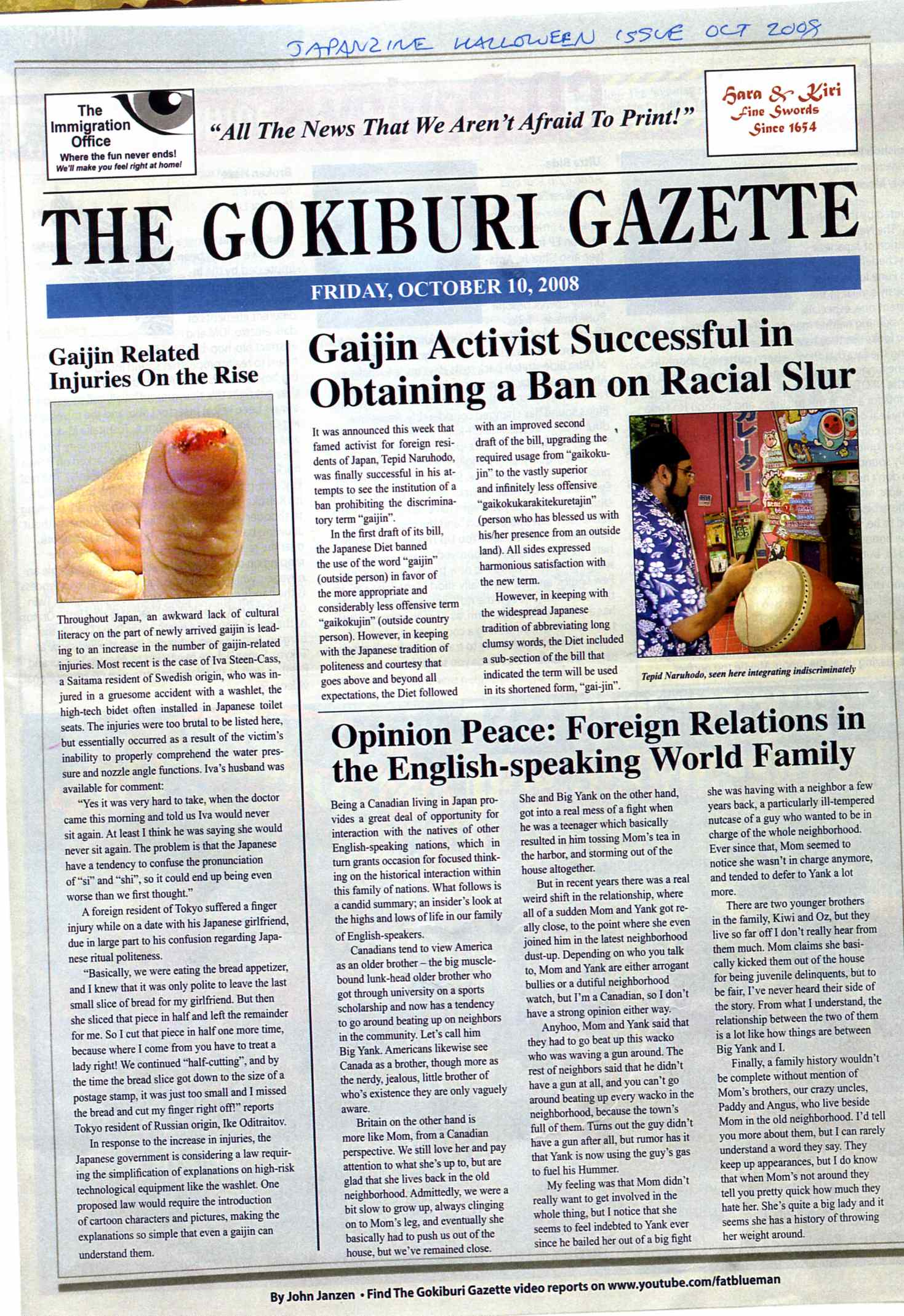








![YokosoJapan[2].gif](https://www.debito.org/wp-content/uploads/2007/11/YokosoJapan[2].gif)
